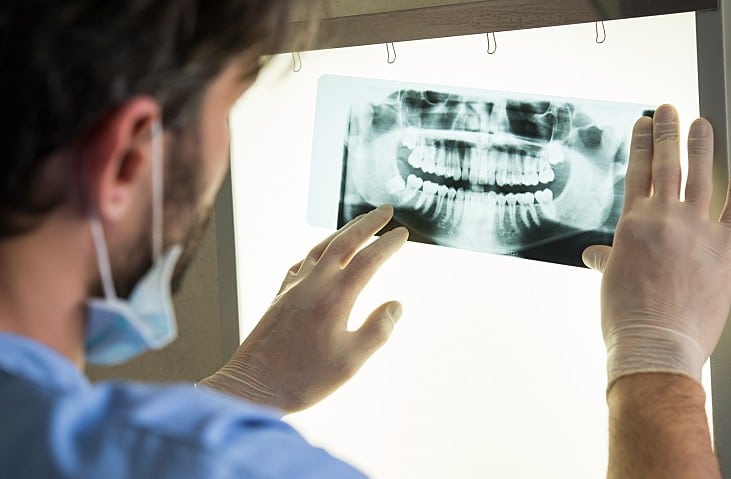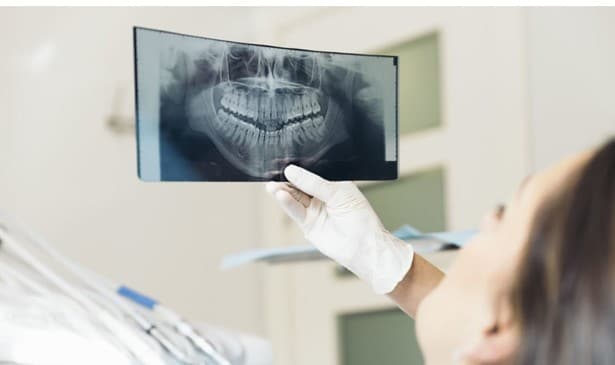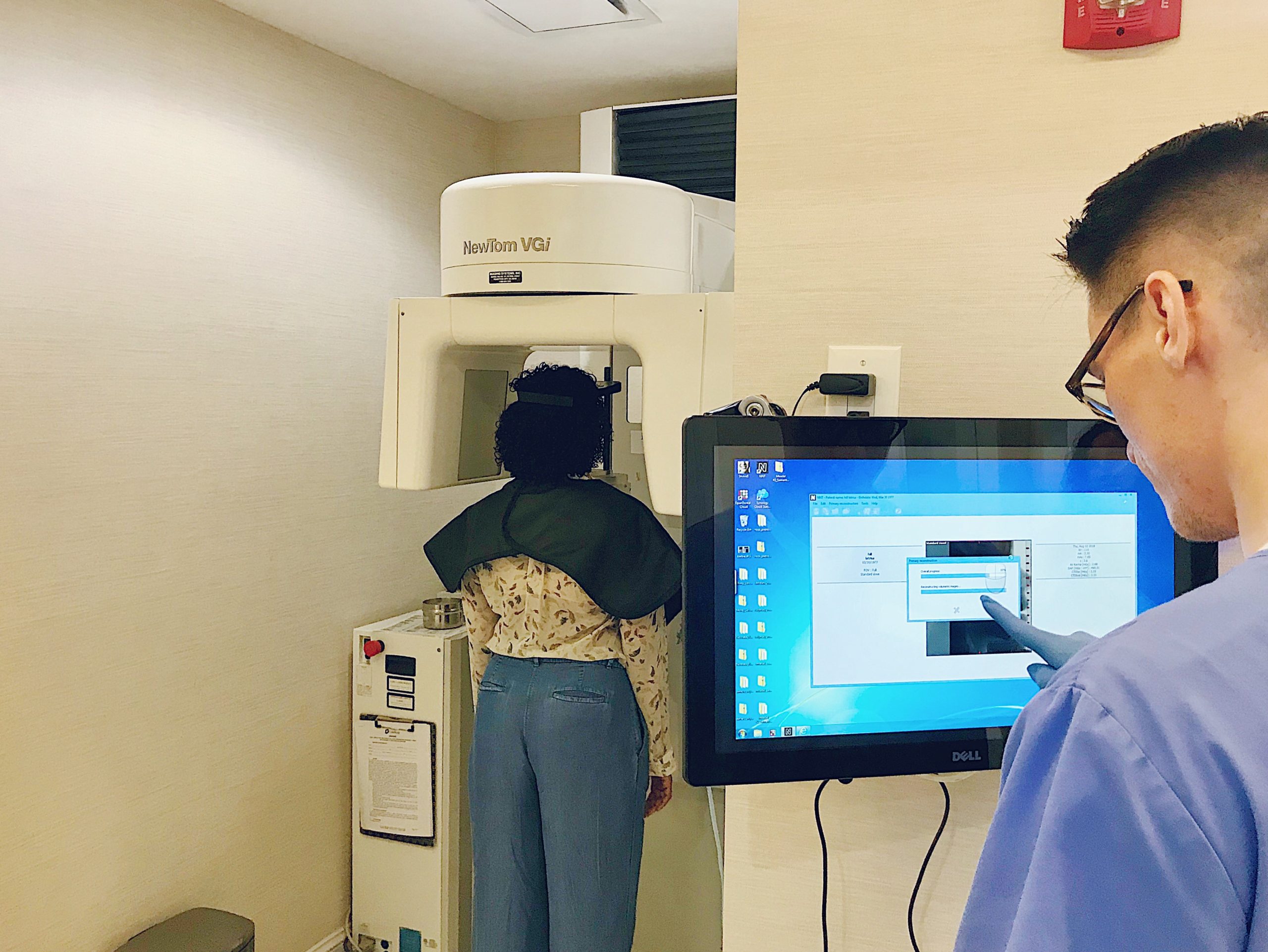
When patients are told they have to get an x-ray done, the immediate question that comes to mind is “is it harmful to my body?” Any type of x-ray does give off radiation which, with increased exposure, can be harmful to the body, but the question is, how much is too much? There is no need to worry, the minimal radiation exposed during dental x-rays is not dangerous to the body. Dental x-rays very important in dentistry because they allow dentists to view between and inside your teeth, things that cannot be seen during a visual examination of the mouth.
Here at Rockefeller Cosmetic Dentistry, we care for the overall health of our patients and provide them with the best possible preventative, restorative and cosmetic dentistry services. However, in order to do so, dental x-rays help our specialists accurately diagnose and treat dental complications. We want to help you have a better understanding of how dental x-rays actually work!
Why Are Dental X-Rays So Important?
Of course, everyone’s oral health differs, and depending on this, your dentist will schedule x-rays accordingly. Dental x-rays are typically performed yearly to track your oral health or the progress of a dental issue or treatment. Indicators that you may need a dental x-ray include:
- Any signs or symptoms of oral disease
- A history of gum disease
- Age
- Your current oral health
For new patients, a full mouth series of x-rays are recommended to evaluate your current oral health. Once you begin your regular dental visits, the amount of dental x-rays needed will decrease.
Dental x-rays are a diagnostic as well as a preventative tool used in dentistry because they allow dentists to detect potential oral care complications in the mouth before they become severe. The x-ray images allow dentists to:
- Examine the bone surrounding the teeth
- View the tooth roots
- Find a cavity
- See the status of developing teeth
- Determine if there is any risk of periodontal disease
Risks Of Dental X-Rays

Dental x-rays are safe; there is no need to worry about unnecessary exposure to radiation. While radiation is involved with dental x-rays, the levels that are being exposed are very low; therefore, they are considered safe for both adults and children. There are several precautions taken during dental x-rays. A lead bib will be placed on you covering your chest, abdomen, and pelvic area to protect and prevent any radiation exposure to your vital organs.
Are You Pregnant?
If you are pregnant, it is essential to advise your dentist before starting the x-ray process. During your pregnancy, dental x-rays may be required in order to examine your current periodontal and oral health state. Appropriate shielding will be worn to protect yourself and the fetus. In order to provide you with optimal safety, the dentist will consult with your OB-GYN to determine if it is safe to complete. Depending on the circumstances, the x-ray may be postponed or modified to reduce the exposure of radiation. The radiation exposure is not significant enough to cause any adverse effects to the pregnancy.
Types Of X-Rays
There are several types of dental x-rays, each capture several different views of the mouth. The most commonly used in dentistry are intraoral x-rays, which include:
- Occlusal. This type of x-ray is taken when your jaw is closed and captures a clear image of the bite of your upper and lower jaw. It also helps identify any abnormalities with the palette or floor of your mouth.
- Full mouth series of x-rays. The full mouth series of x-rays is a set of intraoral x-rays taken of the patient’s teeth and surrounding hard tissue. This x-ray is required on the day of a new patient for a proper dental examination.
- Panoramic. This x-ray captures the teeth, jaw, nasal cavities, sinuses, and joints of the jaw. Panoramic x-rays are typically used for checking wisdom teeth, planning implant dental services, or examining jaw complications.
- Bitewing. This technique requires you to bite down on a special piece of paper and allows the dentist to see how these teeth touch each other. It is typically used to detect any possible decay between the back teeth.
- Periapical. This technique provides a view of the entire tooth, from the crown, to the root of the tooth, and the surrounding bone that supports it.
During the x-ray process, a specialist will guide you through every step, ensuring all precautions are taken to ensure your safety.
In-House Digital X-Rays At Rockefeller Cosmetic Dentistry!

In order to provide our patients with the best possible dental care, we use the most modern, advanced technology. This is all conveniently located in our office. Here at Rockefeller Cosmetic Dentistry, we care about the comfort and health of our patients, that is why we use low radiation digital radiography methods when it comes to taking x-rays. The digital radiography method that we use reduces radiation exposure by up to 90% compared to traditional film x-rays. They ensure safe, fast, and precise imaging readily available for our specialists.
Thanks to new advancements in technology, our office also offers holistic dental radiography. This technique provides patients with modern dental imaging without most of the radiation that is associated with the traditional film method. This allows our patients to be worry-free about potential side effects of radiation or effecting their holistic lifestyle.
To schedule your complimentary consultation with Rockefeller Cosmetic Dentistry, call (212) 581-1091.
